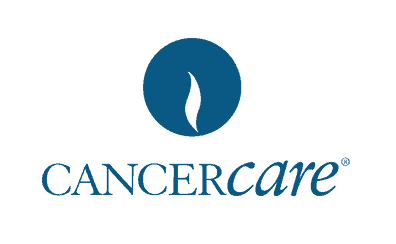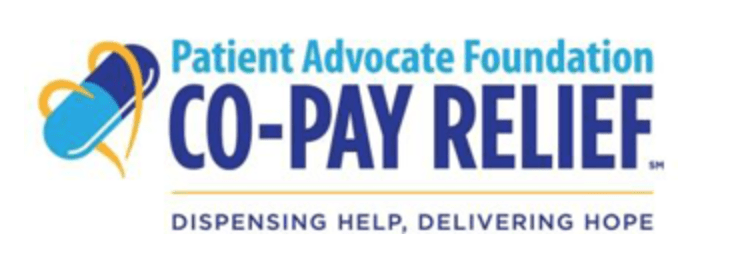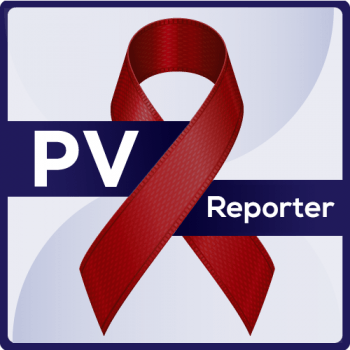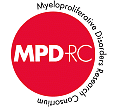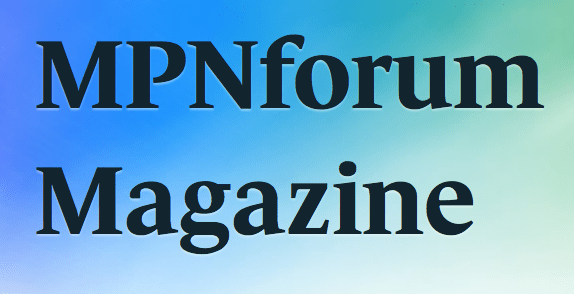“Every three to four months I get a wake-up call that my life has taken an unexpected turn. Believe me, there are daily reminders of how different I am now; but scan time is big time scary time, mentally. It takes living with cancer to yet another level of heighten sense of mortality and anxiety. So MANY thoughts and what ifs course through my brain. SO hard to shut it off.” – Katie Edick, METASTATIC AND MAKARIOS.
It may not be officially part of the medical lexicon yet, but “scanxiety” is no less real for those of us who have experienced a diagnosis of cancer. Pamela Katz Ressler, RN, MS, HNB-BC, founder of Stress Resources, describes scanxiety as “the anxiety, worry and fear that accompanies the waiting period before and after a medical test.” She says it is a common side effect of modern medicine. “As our medical system has become more technologically adept at measuring indicators of disease so too has our anxiety” she says. “Scanxiety is an unintended consequence of medical testing, yet it is one that is rarely discussed by medical professionals with patients.”
Writing in Time magazine in 2011, lung cancer survivor, Bruce Feiler, characterized scans as “my regular date with my digital destiny. Scanxiety, he wrote, arises from the feeling of “emotional roulette wheels that spin us around for a few days and spit us out the other side. Land on red, we’re in for another trip to Cancerland; land on black, we have a few more months of freedom.”
One of the most common emotional and psychological responses to the experience of cancer is anxiety. Cancer is a stressful experience and normal anxiety reactions present at different points along the cancer journey. Did you know that the word anxiety comes from the Latin word anxius, which means worry of an unknown event? Worry, in turn comes from the Anglo-Saxon word “to strangle” or “to choke” – which may very well convey the feeling we have right before a scan, or whilst waiting for its results.
Anxiety is a natural human response that serves a biological purpose – the body’s physical “fight or flight” (also known as the stress response) reaction to a perceived threat. Symptoms vary for each person. You may experience a racing or pounding heart, tightness in the chest, shortness of breath, dizziness, headaches, upset tummy, sweating or tense muscles. Alongside these physical manifestations, you may feel irritable, angry or apprehensive and constantly on the alert for signs of danger. All of these signs indicate that sympathetic arousal of our nervous system has been activated, preparing us to stand our ground and fight or take flight and run away from danger.
Scanxiety, points out Katz Ressler, can be intense and may mimic symptoms of Post-traumatic stress disorder (PTSD). PTSD is an extreme anxiety disorder that can occur in the aftermath of a traumatic or life-threatening event. Symptoms of PTSD include re-experiencing the trauma through intrusive distressing recollections of the event, flashbacks, and nightmares. As Susan Zager, founder of the non-profit organization, Advocates for Breast Cancer (A4BC), points out “MRIs are very noisy – and because my recurrence was found through an MRI biopsy, I have many memories of scary results from that test.”
It’s been over ten years since I was diagnosed with breast cancer and while my scans are less frequent these days, the anxiety never fully goes away. As blogger and patient advocate, Stacey Tinianov writes, “This is reality even after almost five years with no evidence of disease. I’m not a worrier or a hypochondriac. I’m just a woman whose body once betrayed her by growing a mass of rouge cells that, if left unchecked, have the potential to bring down the house.”
If you are facing an upcoming scan and feeling anxious about it, you may find the following tips helpful. Based on my own experience and the experience of others in the cancer community, these tips are some of the ways in which we have learned to cope with scanxiety.
1. Identify your body’s stress response
How we experience stress is individual to each of us. Learning to tune into what happens in your body when you perceive a stressful situation is the first step in understanding your individual stress response. Does your jaw clench? Is your breath shallow? Are your muscles tense? When you become more aware of your physical response to stress, it will help regulate the tension when it does occur.
2. Pay attention to your breathing
When we are stressed we tend to breathe more shallowly. Shallow breathing, which does not allow enough oxygen to enter our bodies, can make us even more anxious. When you feel stressed, practise taking some slow deep abdominal breaths. Deep abdominal breathing slows the heart down and lowers blood pressure. The advantage of focussing on the breath is that it is always there with us. We can turn to it anytime we are feeling anxious.
3. Stay focussed on the present
Focussing on the past or future can increase your anxiety. Katz Ressler recommends staying focused on the present moment as a way to quieten anxious thoughts. “Methods that have proved successful for scanxiety focus on tools of resilience, often based on mindfulness strategies,” she says. “Key in these methods is to focus on the present moment and not on the outcome of a test or scan.” Focusing on each and every breath is an excellent way to begin to increase your awareness of the present moment. If you would like to try some short mindfulness meditations to increase resilience and help decrease anxiety, you will find some on Katz Ressler’s website.
4. Use visualization
By enhancing your relaxation skills, you are can lower the fight or flight response that is often triggered during times of increased anxiety. Visualization involves using mental imagery to achieve a more relaxed state of mind. Similar to daydreaming, visualization is accomplished through the use of your imagination. Karin Sieger who has recently received a diagnosis of cancer for the second time, shares this advice, “I certainly keep my eyes shut when inside the machine; focus on my breathing; remind myself this has a start and finish; and then generally try and go in my mind to a calm meadow and have a snooze. Because for once there is nothing else I can or should do for the next minutes.”
5. Practical coping tips
Karin also points to the claustrophobic feeling of being enclosed in a scanning machine as a contributor to anxiety. Stage IV breast cancer patient, Julia Barnickle recommends an NLP (Neuro Linguistic Programming) process, called the “Fast Phobia Cure” which worked for her. “I still don’t like enclosed spaces,” she says, “but I certainly don’t panic like I used to.” Blogger Margaret Fleming also recommends asking the attendants for any items that can make you more comfortable, such as ear-plugs or a blanket.
6. Break the worry habit
Worry can be a habit and like all habits can be broken. As soon as that worry voice starts in your head, examine it before it takes hold. Ask yourself, will worrying about this help me in any way? Julia writes, “For me, worrying is a choice – as is happiness. In the same way that I choose to be happy, regardless of what happens around me or in my own life, I also choose not to worry about – or fear – what might happen in the future. I tend to believe that things will work out for the best. And besides… what will happen will happen, regardless of whether or not I worry about it – so I don’t see the point of spoiling my enjoyment in the meantime. I prefer to get on with my life.” Jo Taylor, who is living with secondary breast cancer agrees. “I have taken the view that nothing will change the outcome, therefore there’s no point in worrying,” she says.
7. Create an anxiety worry period
Many patients speak about the most anxious period of time being the time you are waiting for scan results. As stage IV blogger and patient advocate, Susan Rahn, writes, “Waiting for the results of any scan that will tell you if the cancer is active and taking up residence in new parts of your body is just as anxiety inducing, if not worse, as the time leading up to and the day of the actual scan.”
You won’t be able to break the worry habit entirely and ignoring anxious thoughts and feelings can sometimes make them worse. It’s still important that you acknowledge your worry but not let it control your life. One tip is to designate one or two 10-minute “worry periods” each day, time to fully focus on your anxiety. The rest of the day is to be designated free of anxiety. When anxious thoughts come into your head during the day, write them down and “postpone” them to your worry period.
8. Take Some Exercise
Exercise is one of the simplest and most effective ways to reduce stress and anxiety –providing a natural outlet for your body when you are exposed to too much adrenaline. Jo Taylor, who runs an Exercise Retreat To Recovery program in the UK, finds that staying physically active is helpful. “I am still very nervous in the time between scan and reporting, “she says, “but throwing myself into work or exercise or anything else I do is helpful.”
Virtually any form of exercise, from aerobics to yoga, can act as a stress reliever. The important thing is to get moving, even if that means just walking around the block. Movement with flow and rhythm can also help calm the body and mind. Katz Ressler recommends gentle yoga and walking meditation as proven ways to decrease the stress response and increase the body’s natural calming mechanism. “Finally, remember”, she says, “while you cannot control the outcome, you can work to control the experience and that starts with building resilience.”
I hope you will find these tips helpful and if you have any other coping tips please feel free to add your advice in the comments below.
A Stanford Medicine X e-Patient scholar, Marie Ennis O’Connor is an internationally recognized keynote speaker, writer, and consultant on global trends in patient engagement, digital health and participatory medicine. Marie’s work is informed by her passion for embedding the patient voice at the heart of healthcare values. She writes about the experience of transitioning from breast cancer patient to advocate on her award-winning blog Journeying Beyond Breast Cancer.
















